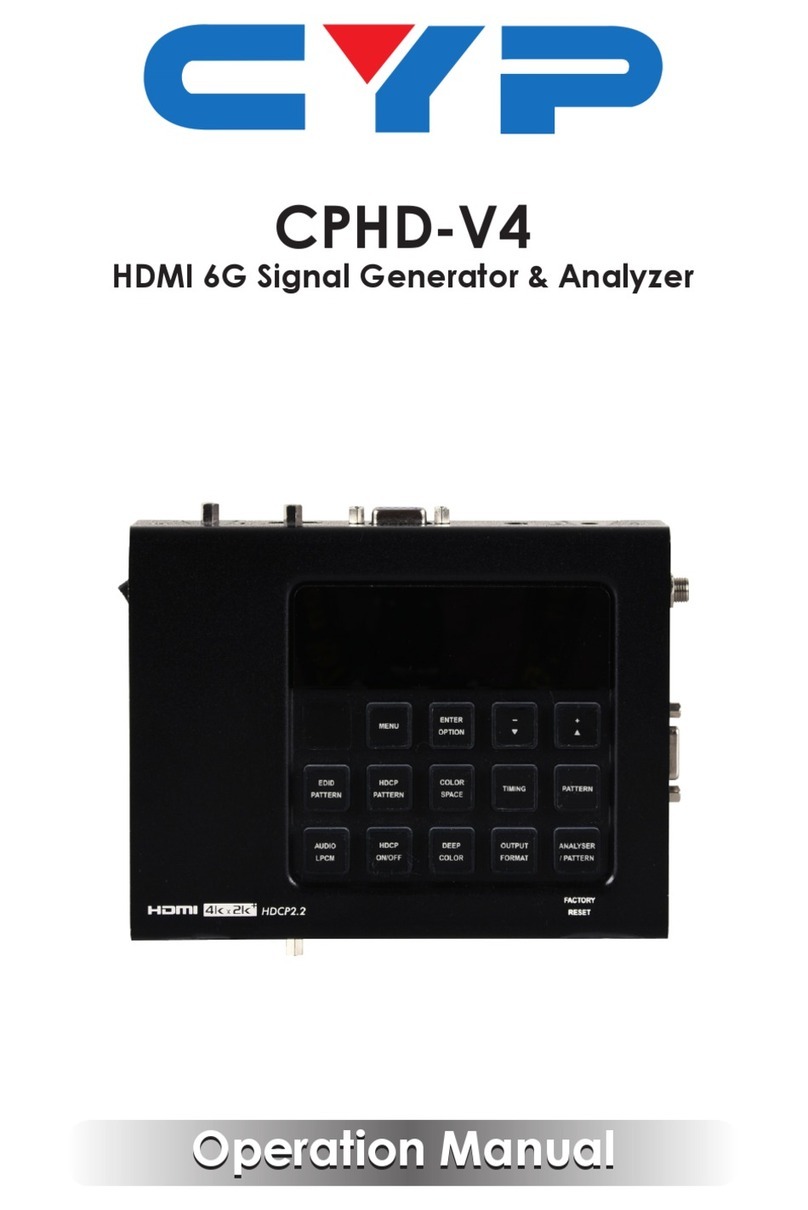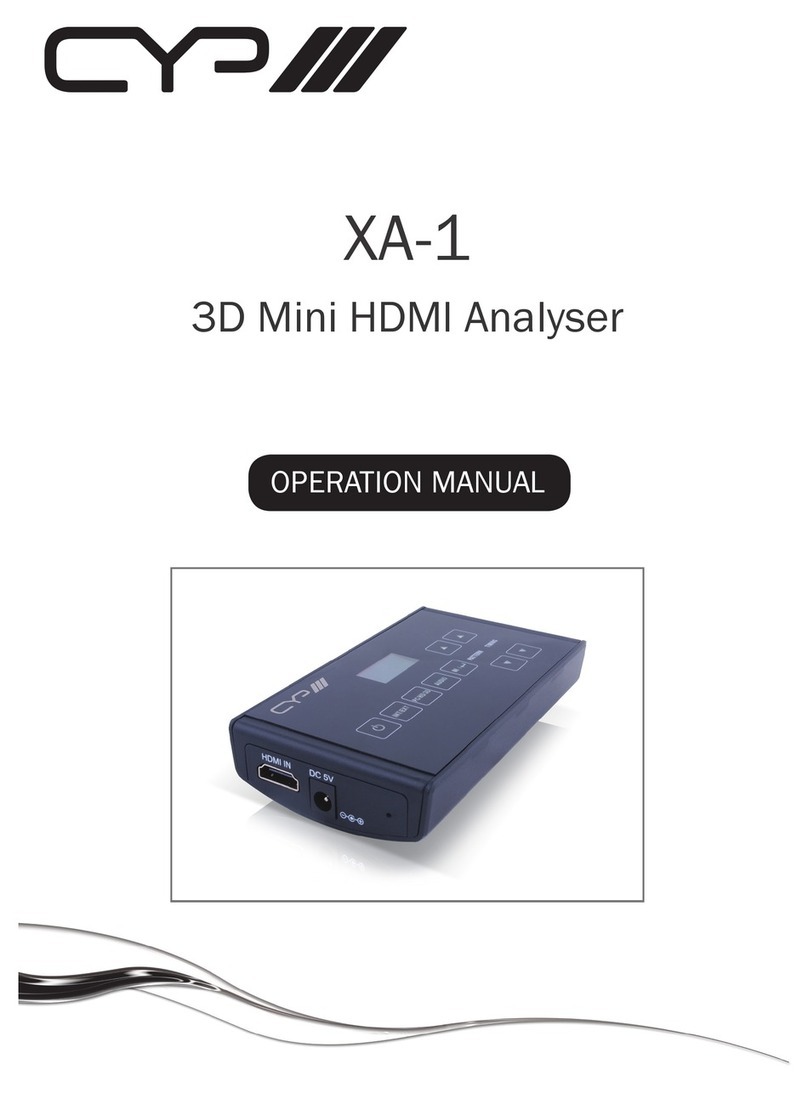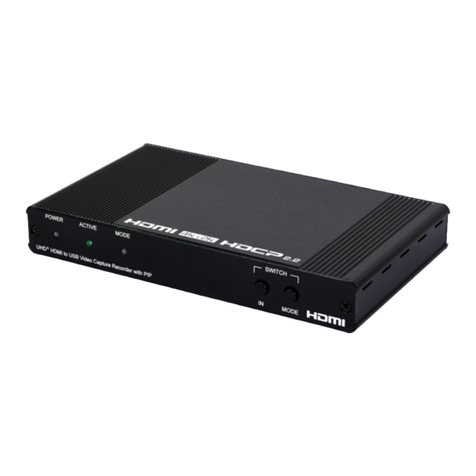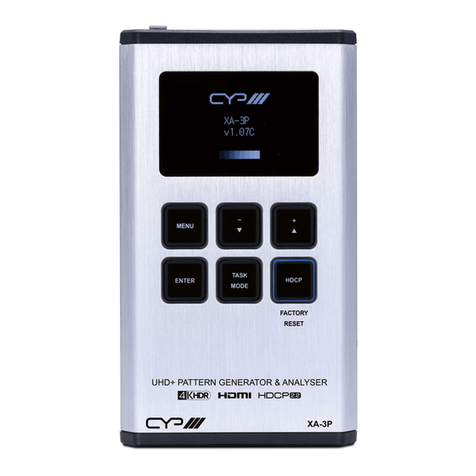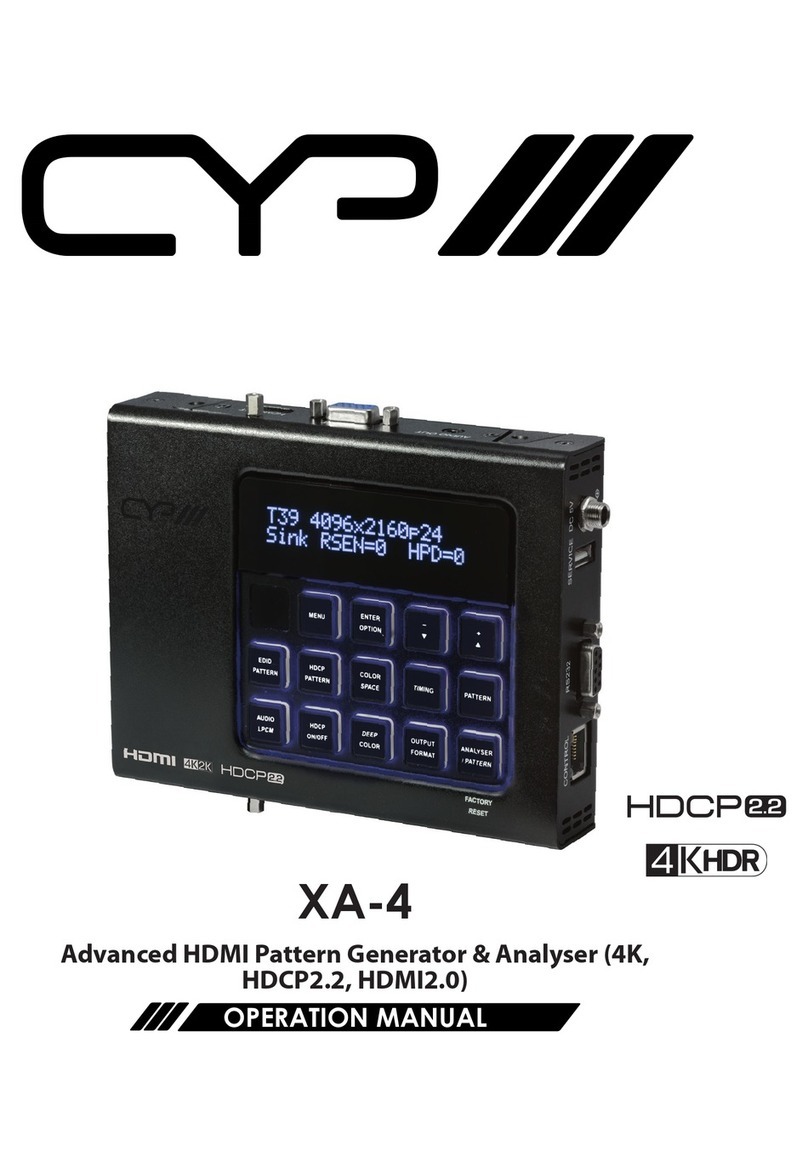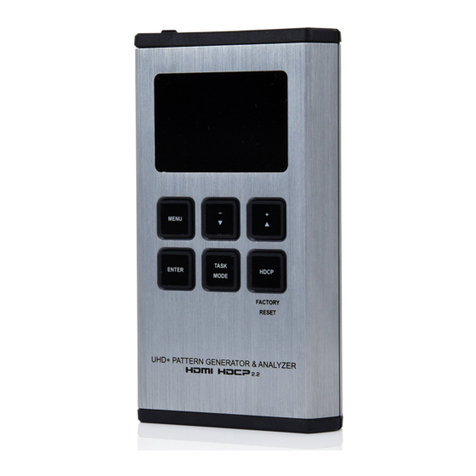2
4. SYSTEM REQUIREMENTS
• HDMI/VGA receiving equipment such as an HDTV, monitor or audio
amplier and/or HDMI source equipment such as a media player,
video game console or set-top box.
• Analog audio source equipment such as a PC or media player
and/or analog audio receiving equipment such as headphones, an
audio amplier or powered speakers.
• RS-232 or Ethernet control device such as PC/Laptop. (Optional)
• USB enabled device for uploading user test patterns.
5. FEATURES
• HDMI 2.0 (up to 4K@60Hz 4:4:4) and DVI 1.0 compliant
• HDCP 1.4 and 2.2 compliant
• Analysis of source and sink data paths up to 18Gbps HDMI signals
• Analysis of HDMI data packets
• Analysis and control of HDCP v1.4 and v2.2
• Analysis and emulation of EDID data, including SCDC
• Analysis of input audio signals
• HDR bypass and analysis support
• Generate HDMI timings up to 18Gbps (4096×2160@60Hz 4:4:4, 8-bit)
• Generate HDMI and VGA signal outputs
• VGA output supports 350p, 480p, 576p, 720p, 1080i, 1080p, 640×480,
800×600, 1024×768, 1280×1024, 1366×768, 1400×1050, 1440×900,
1600×900 (RB), 1600×1200, 1680×1050, 1920×1200 (RB), 2048×1080p
• HDMI output supports 350p, 480p, 576p, 720p, 1080i, 1080p, 640×480,
800×600, 1024×768, 1280×1024, 1366×768, 1400×1050, 1440×900,
1600×900 (RB), 1600×1200, 1680×1050, 1920×1200 (RB), 3G4K, 6G4K
• 2 custom user test pattern resolutions - 640×480 & 1920×1080
• External stereo audio input and output
• Generation of LPCM sinewave audio on up to 8 channels
• Front-panel, RS-232, Telnet, and IR Remote controls
• OLED display with rapid updates of current status information












